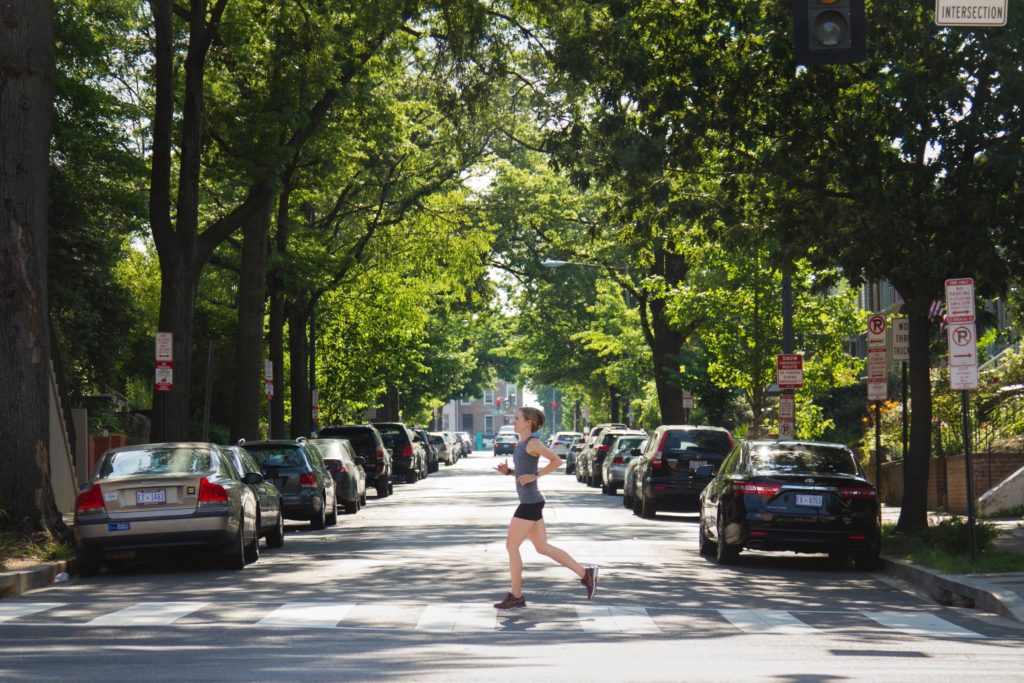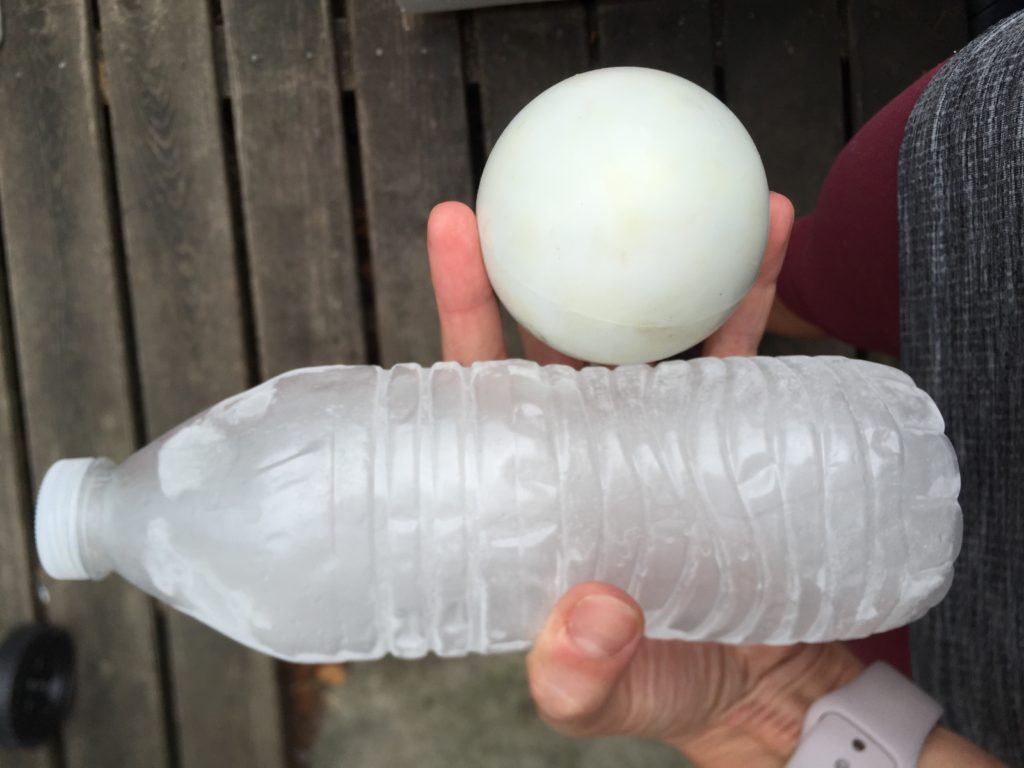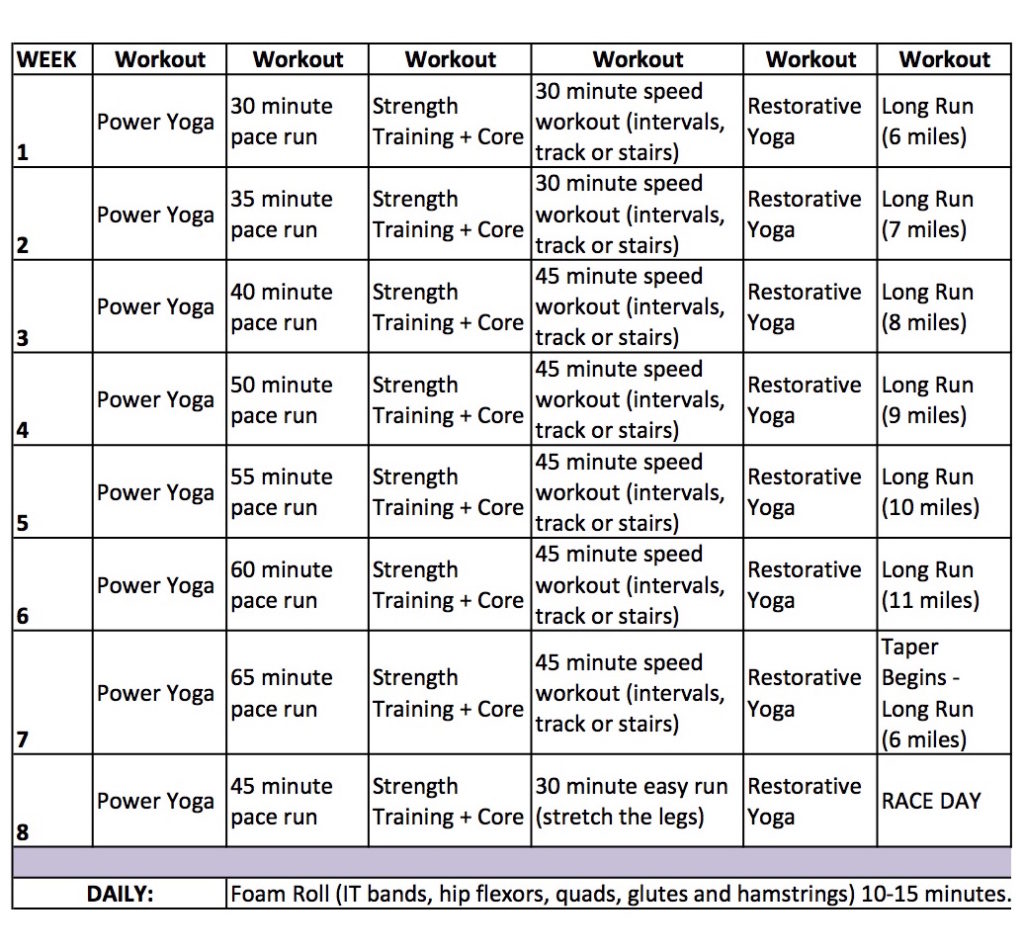
Step-by-Step:
1. Come to tabletop position, shoulders stacked over wrists, hips over knees.
2. Leave your knees where they are but come down onto your forearms, elbows directly under shoulders.
3. Spread the fingers wide and press hands and forearms firmly into the mat. Curl your toes under and press into the balls of your feet as you straighten your legs out, hips reaching high to the sky.
4. Keep a nice long spine and walk your feet closer to your elbows by a couple of inches.
5. Keep your gaze between your hands and let the chest melt back towards your thighs as your shoulders soften and hamstrings slowly open with breath.
6. Take 10 deeps breaths (count to 4 on the inhale and 4 on the exhale) then slowly release, coming back to tabletop.
How it will heal you:
Hamstring Pulls – The vast majority of the time, hamstring pulls are a direct result of inflexible hamstrings. This big muscle group requires patience and daily attention to open up and can be really frustrating in their resistance to change. You are not going to go from barely touching your toes to Jordyn Wieber overnight. Commit to working on this posture every day and slowly but surely you’ll get the results you want and your body needs.
Shoulder Pain – Football, lacrosse, and baseball players know shoulder pain. As a yogi, I can also vouch for the frequency of shoulder injuries in yoga–a misaligned jump-back to chaturunga is one of the fastest ways to wreck your rotator cuffs. Shoulders, like hips, are a ball-in-socket joint and thus are designed to have a broad ROM (range of motion). Athletes and office bees alike experience a lot of shoulder pain because not enough attention gets paid to maintaining the flexibility of this critical joint. Increase the openness of your wrists, chest and upper back to prevent and treat discomfort. Additionally, focusing on contralateral movement (i.e. twists) will help to eliminate rigidity from the upper body.
Lower Back Pain – How many of you have experienced lower back pain? I’d venture to say that anyone who sits in a chair all day has suffered through their fair share. This is also a big one for athletes. Why is that? Most often, lower back pain in athletes stems from tight hamstrings. For my fellow anatomy nerds out there, the hamstrings originate on the sitz bone–aka those little nobs deep in the flesh of your booty that us yogis balance on when doing boat core work (my favorite!). , If your hamstrings are tight they will pull down on the pelvis from the insertion point (the sitz bone) tilting it out of proper alignment and forcing your body to compensate using your lower back to remain upright. Another common reason for low back pain is underdeveloped abdominal muscles. I’m not talking just the six-pack abs (rectus abdominis) but also the deeper corset abs (transverse abdominis) that are critical for balance and stability. The simply solution to preventing and treating lower back pain is to stretch out your hammies and workout your core every day.
Wrist Problems – Football, lacrosse, baseball, tennis and basketball players are incredibly susceptible to wrist injuries. Amongst others, yogis should be added to that list–just ask two of my fellow yoga teachers who went through training with me and are still modifying their Down Dog months later. In order to avoid wrist issues, it’s critical that you build strong forearms, biceps, triceps, shoulders and upper back. Like all other joints, it’s also important to maintain ROM (range of motion) and flexibility in the joint itself as well as the elbows and shoulders so that the body can maintain proper form and alignment when generating power and movement from the upper body and arms.
Foot and Ankle Issues – I can’t tell you have many times I wrenched my ankle playing soccer and field hockey as a kid, or more recently while hiking and running. Ankle sprains, Achilles tendonitis and plantar fasciitis are three very common foot and ankle injuries. These injuries are no fun because let’s face it, when our foundation is out of whack everything else is thrown off and dysfunctional. The answer to avoiding these frustrating beasts of burden is to strengthen the ankle, increase the flexibility of the ankle and toes and work on your balance. Not only does this require concerted effort to increase the openness in these areas but it also means more core work. Core is your key to stability, meaning you’ll be less likely to get thrown off balance and tweak something if your abdominal and back muscles are strong.
HAPPY 4TH OF JULY!!








